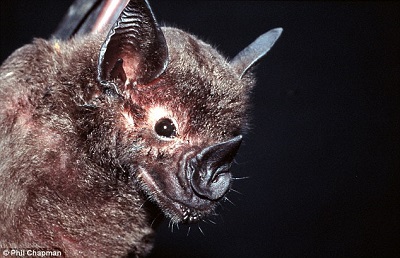Blind as a bat? Spooky creatures traded good sight and smell for the ability to hunt using their sense of sound
Bats’ ability to detect and hunt insects in the dark using echolocation is one of the marvels of the natural world.
But to evolve their unique sonar system for exploring pitch-back caves, some species made trade-offs when it came to their other senses such as vision and hearing, a new study reveals.
While it doesn’t confirm the popular phrase ‘blind as a bat’, the study says two types of bat that rely on echolocation have lost a dozen vision-related genes.
Echolocation works by bats making high pitched calls inaudible to humans as they fly and listening to the returning echoes.
This allows them to build up a sonic map of their surroundings.
This means a bat can work out how far the wall of a cave is, for example, by how long it takes the sound to return to it.
But the technique is not used by all bats.
Old World fruit bats have no echolocating ability and instead rely on their excellent eyesight to spot dinner and find their way, whereas echolocating bats rely solely on echolocation for navigation.
A team led by Dong Dong set out to explore the creatures’ ‘superpower’ further.
They compared two echolocating bats – the great leaf-nosed bat (Hipposideros armiger) and the rufous horseshoe bat (Rhinolophus sinicus), which are named for their protuberances on their noses.
The team confirmed evolutionary trade-offs at work- showing an extensive contraction of olfactory [smell] receptor gene repertoires and loss of a dozen vision-related genes in the echolocating bats.
This suggests their eyesight and sense of smell is not as sharp as it might be if they hadn’t honed their ecolocation system.
The experts also re-sequenced the whole genome of 20 great leaf-nosed bats from four major distributed locations, and measured their genetic diversity and patterns of evolution.
They found evidence of genetic adaptations in the great leaf-nosed bats that are associated with high altitudes, shedding more light on how bats have evolved to suit specific locations and tasks over the millennia.
Source: Daily mail
N.H.Kh

